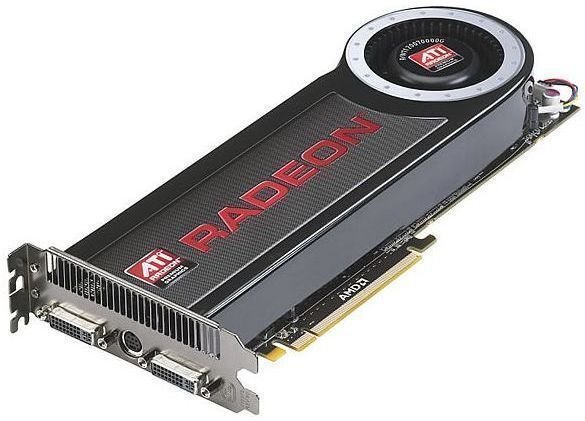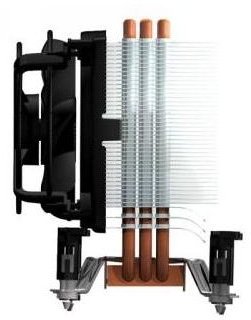How to Adjust Fan Speed in a PC? CPU and Case Fan Adjustments
Speed Matters
The largest source of noise in a PC is the many fans used to cool it. Fans contain rotating parts which move and agitate air, and that naturally causes vibrations and thus noise. This noise can become quite annoying at times. If the once-sweet buzz of PC fans is starting to becoming a problem, try the following steps to decrease their speed. Just a quick word of warning - there is always the risk that decreasing fan speed will cause a PC to overheat. For that reason it is wise to download a program like SpeedFan to assist in keeping tabs on system temperatures.
Adjusting the Speed of the CPU Fan
There are two possible ways to adjust a CPU fan. The far easier way is to adjust it using a program which is launched inside the Windows operating system. A custom-built PC may have such a program available to it. To find out, consult the manual which came with the motherboard in the PC or consult the motherboard manufacturer’s website. Some ASUS motherboards come with this function, for example. As an alternative to the manufacturer provided software, the previously mentioned SpeedFan program can be used to change fan speeds. Of course, this will only be possible if the motherboard supported the feature in the first place.
Those who did not build their own PC, or who did not buy a motherboard supporting this feature, will have to adjust the CPU fan speed in the BIOS (learn more about the [computer BIOS here](https://Hi, just got my order #10…0176 I got five bottles, and they all have what they are supposed to have in them. The thing is, the super strongs say 15ml on them, but I ordered 30ml of each Amaretto and Butter Rum. There is definitely more liquid in the super strong bottles, but it doesn’t look like there is twice as much as in the 15 ml bottles, were you able to squeeze 30ml in there? I need to know because obviously I don’t want to screw up mixing the 48mg strength stuff.)). This is not as scary as it sounds, but the instructions depend on the BIOS on each specific PC. Generally speaking this functionally is listed under the BIOS menu options of CPU, Overclocking, or Advanced. Consult the manual which came with the PC or the motherboard for more information. Unfortunately, some motherboards do not ship with the option to change fan speed in BIOS, so there is the chance that no adjustment in fan speed will be possible.
Adjusting the Speed of Case Fans
There are two main methods for adjusting case fans. The more common method is to adjust them using a manual switch built into the fan or attached to the fan by a cord. Locating this switch is fairly simple as it must be in some way attached to the fan. In most cases it is attached to the fan by a short cord. Adjusting the fan speed is simply a matter of switching between the available options, which are usually low, medium, and high. Do be sure that the PC is turned off and unplugged before making this change.
Some motherboards allow for case fans to have their fan speeds adjusted through either the BIOS or a program launched in Windows. This is achieved through a process called Pulse Width Modulation. This is essentially a way of controlling the amount of power sent to a fan so that it operates at a desired speed. However, to make PWM work one needs a fan that is capable of working with PWM, a motherboard that can control PWM, and software in Windows (like SpeedFan) which provides an interface. A final possible solution is to bypass or supplement motherboard control by using a fan controller, a physical unit which is usually placed in a 5.25" external drive bay and provides various buttons and/or knobs for controlling fan functions.
As with the CPU fan, it is possible to have fans that provide no room for adjustment at all. In fact, many pre-built machines ship with fans that can’t adjusted: same goes for the fans that are included in many cases. Fans are cheap and easy to install, however. Products like Antec’s Tri-Cool fans are inexpensive and provide manual fan adjustment.
Adjusting the Speed of the Video Card Fan

The fan used to cool the GPU on a video card is often times the loudest in an entire system. Modern GPUs are extremely powerful pieces of hardware and require a significant amount of cooling in order to remain functional. Sometimes, however, the cooling provided is a little more than needed, and room for moving the fan speed down can result. Obviously, a GPU which is already running at a high temperature should not have its fan speed limited, so be careful to check how hot the GPU is running before limiting the fan speed. Also keep in mind that some video card manufacturers consider a warranty void if fan speed is tampered with.
There are a lot of different programs that can be used to adjust fan speeds, but Rivatuner is one of the best. It is compatible with both Nvidia and ATI video cards and it has a robust interface that includes accurate reporting of GPU temperatures and fan speeds. Download and install Rivatuner, and then launch the program. Check the GPU temperature with the Hardware Monitoring tool. In general, a core temperature of 90 degrees is the limit, but you should check while playing a game or otherwise heating up the graphics card. If you have some headroom, you can turn the fan speed down: from the Main Menu click on the button directly to the right of the “Customize…” text. A small menu will appear with various options. The one furthest to the left will be Low-Level Settings. Select it.
Now there will be a menu with Overclocking and Fan options. Go to Fan and click the box labeled Enable low-level fan control. The slider will now be available. Click on fixed, and then move it to the lowest possible setting. This will be 25%. Once the fan speed is modified, be sure to monitor the GPU temperature with the Hardware Monitoring tool in Rivatuner. This will ensure that the GPU is not becoming too warm. Remember, a core temperature of 90 degrees Celsius is generally the limit, but air cooling is heavily dependent on ambient temperature, so keep monitoring: what works in November might not work in June.
Buying New Fans
One trend that is apparent throughout this brief tour of adjusting PC fan speeds is that there are many situations where simple adjustment is not possible because the fan or BIOS does not offer the proper options. If this is the case, then an upgrade is the only option. Those looking to buy new fans should turn to the Brighthub guides on CPU Fans and Case Fans for help. GPU fan replacements are rarer, but some products (called VGA Coolers) do exist.
